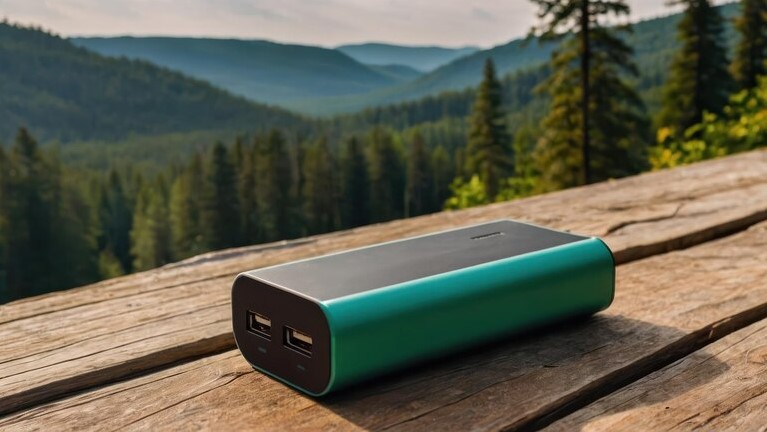
These power supplies are an essential kit for outdoor enthusiasts, working professionals who have to get their work done from location to location, or even those who simply need assured power backups. With them, you can keep the power of your devices available when camping deep in the woods or when a home power outage strikes. Of course, with such a selection of equipment, it becomes somewhat uneasy to choose the proper portable power supplies. The guide can help you learn what is best to suit your needs by focusing on the most important moments to pay attention to.

1. Determine Your Power Needs
To start, it’s crucial to understand how much power you need. After all, different devices require different amounts of energy, and knowing your requirements will guide your choice.
Key Considerations:
Wattage Requirements: For sure, every machine has its wattage requirement. So check the labels on your electronics such as mobile phones, laptops, and small appliances, and how much power they use. An example is a smartphone may require only 10 watts, but a laptop could require 60 watts and above.
Total Power Capacity: Portable power supplies have different watt-hour capacities. When you want to charge multiple devices, you should calculate the total wattage to determine whether your power supply can support the load.
Another consideration is how long you may need the power supply to work for your devices. If you are going out of town for a while, then a higher capacity will be a good choice.
2. Port Types and Outputs
Next, think about the types and number of ports you’ll need. Because different devices require different kinds of connections, having the right ports is essential.
Key Features to Look For:
- AC Outlets: These are necessary for standard appliances, like laptops and small kitchen gadgets. So, ensure the number of AC outlets meets your needs.
- USB Ports: Many portable power supplies offer USB ports for charging phones, tablets, and other devices. Moreover, look for both standard USB-A and newer USB-C ports for added versatility.
- DC Outputs: If you need to power car accessories or specific devices, it’s wise to check for DC outputs as well.
3. Portability and Weight
When choosing a portable power supply, think about its weight and portability. Since the main advantage of a portable power supply is that it’s easy to carry, these factors can make a big difference.
Important Factors:
- Size and Weight: Choose a model that you can easily transport. Especially if you plan to hike or travel with it, lighter options are generally better.
- Built-in Features: Furthermore, some models come with handles, wheels, or compact designs, making them easier to carry. Considering these features can help in making your choice.
4. Battery Type and Charging Options
The type of battery in a portable power supply can greatly affect its performance, lifespan, and charging methods. With this in mind, understanding battery options is key.
Common Battery Types:
- Lithium-Ion Batteries: These are popular because they are lightweight and have a high energy density. Typically, they last longer and can handle more charge cycles than other battery types.
- Lead-Acid Batteries: While generally cheaper, these batteries are heavier and don’t last as long. Nevertheless, they can be a good option for larger power needs at a lower cost.
Charging Options:
- Solar Charging: Some portable power supplies come with solar panels or the option to connect to them, making them excellent for outdoor use.
- AC Charging: Most models charge from a standard wall outlet, which is convenient for everyday use.
- Car Charging: If you’re on the road, check if your power supply can be charged via your car’s DC outlet. This feature can be incredibly helpful.
5. Safety Features
Safety should always be a top priority when choosing any electrical device. Therefore, look for portable power supplies with built-in safety features.
Essential Safety Features:
- Overload Protection: This feature stops the power supply from delivering too much power, thereby protecting your devices from damage.
- Short Circuit Protection: Additionally, this helps prevent accidents that could occur due to faulty connections or devices.
- Temperature Control: Some models include cooling systems to avoid overheating during use, ensuring both safety and efficiency.
6. Budget Considerations
Lastly, it’s helpful to set a budget before you start shopping. Since portable power supplies come in various price ranges, knowing your budget will narrow down your options.
Tips for Budgeting:
- Compare Features: Focus on the features you need versus those that are nice to have. After all, higher-priced models often come with extra features, but they may not be necessary for everyone.
- Read Reviews: Additionally, look for customer reviews and ratings to determine if the product is worth its price. Many affordable models offer excellent performance without breaking the bank.
Conclusion
Choosing the right portable power supply is quite a big decision. Keeping those devices charged for camping or traveling, or even power outages, figuring out what your power needs are, thinking about port types and outputs, considering how portable you need it, and thinking of safety- all will be in question when you decide which portable power supply you are going with. Of course, you can never forget your budget due to the wide range available today. The right portable power supply will always bail you out of any situation.




